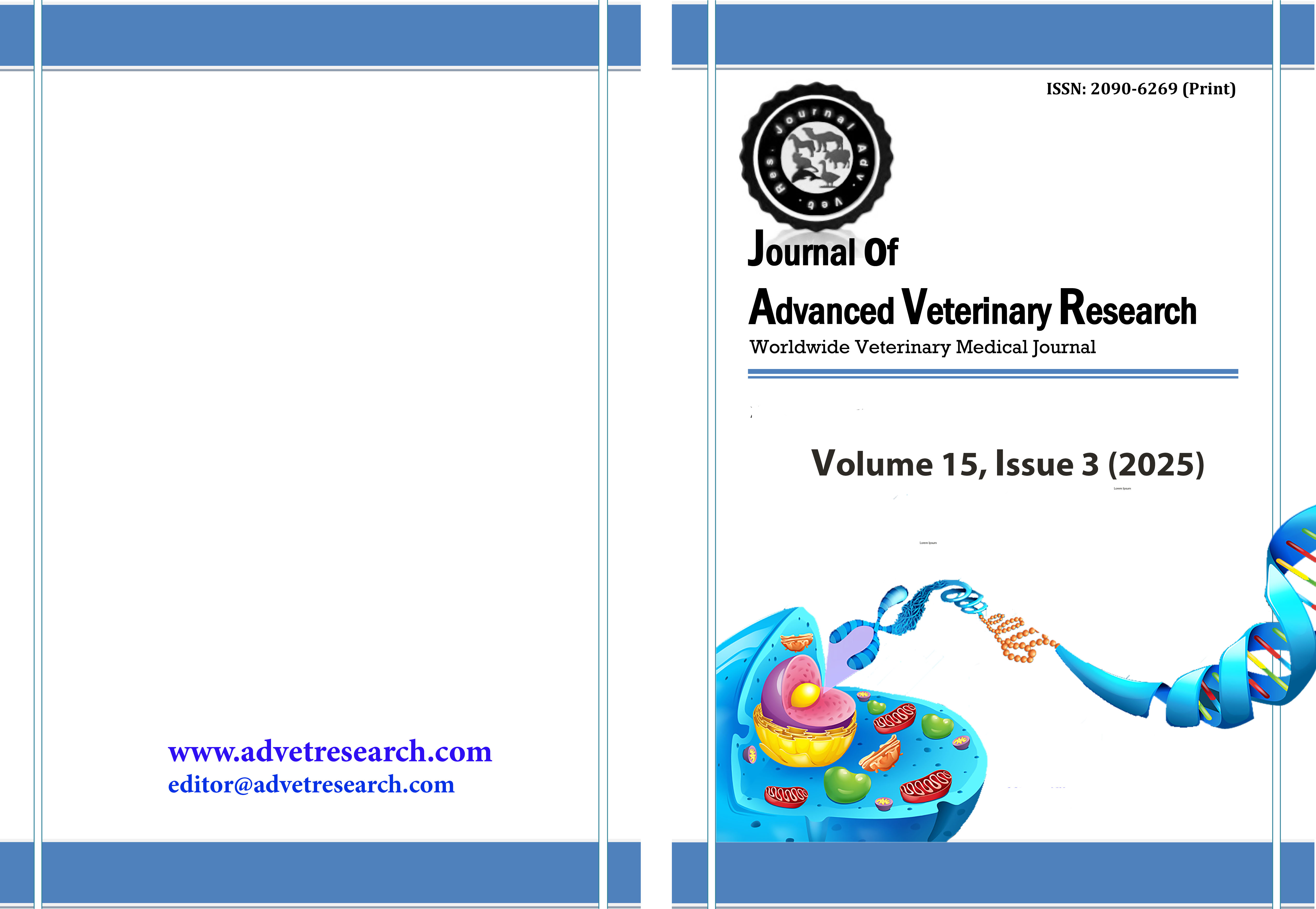Molecular and phylogenetic characterization to assess the evolutionary dynamics of the Spike gene Hypervariable regions of recent Infectious Bronchitis Virus (IBV) isolates in Egypt
Keywords:
Infectious Bronchitis Virus (IBV), RT-PCR, S gene hypervariable regions (HVRs), Phylogenetic analysis, Genetic evolutionAbstract
Infectious bronchitis virus (IBV) remains a significant threat to poultry production despite the widespread use of vaccination, resulting in considerable economic losses due to its genetic variability. Our study aimed to investigate the genetic characterization and evolution of IBV field isolates from Egyptian broiler and layer flocks during the period of 2023 to 2024, focusing on the sequences of hypervariable regions of the S1 gene. In this study, 17 samples were collected from various poultry flocks across three Governorates between 2023 and 2024. Of these 17 samples, six tested positive for IBV using RT-qPCR. Virus propagation was conducted for the RT-qPCR positive samples in the allantoic sac of SPF-ECES. Additionally, five isolates undergo genetic characterization through RT-PCR targeting the S gene hypervariable regions 1, 2, and 3, followed by sequencing and phylogenetic analysis. Findings can be summarized as follows: three isolates were found to cluster with the variant II (Egy/var-II) strain, while two aligned with the classic vaccine strains of the Massachusetts serotype. Phylogenetic analysis revealed a divergence between field and vaccine strains, highlighting the significance of mutations in the S1 gene in viral evolution. These results underscore the necessity for continuous surveillance to monitor IBV variants and assess vaccine efficacy in Egypt.
Downloads
Published
How to Cite
Issue
Section
License
Copyright (c) 2025 Journal of Advanced Veterinary Research

This work is licensed under a Creative Commons Attribution-NonCommercial-NoDerivatives 4.0 International License.
Users have the right to read, download, copy, distribute, print, search, or link to the full texts of articles under the following conditions: Creative Commons Attribution-NonCommercial-NoDerivatives 4.0 International (CC BY-NC-ND 4.0).
Attribution-NonCommercial-NoDerivs
CC BY-NC-ND
This work is licensed under a Creative Commons Attribution-NonCommercial-NoDerivatives 4.0 International (CC BY-NC-ND 4.0) license




